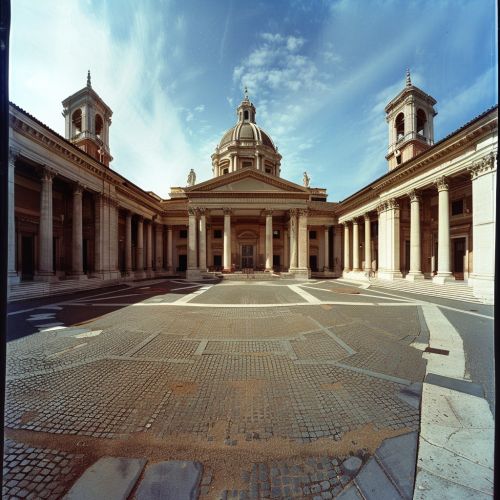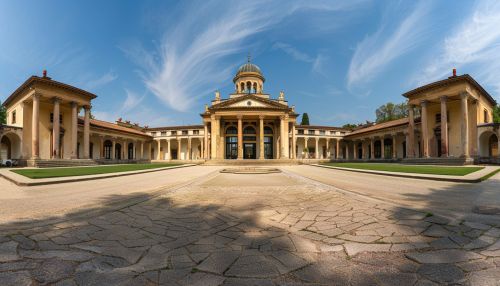Renaissance architecture
Origins and Influences
Renaissance architecture is a style that emerged in Italy in the 15th century, during the period known as the Italian Renaissance. This period marked a shift from the more complex architectural styles of the Medieval period to a return to the simplicity and balanced proportions of classical Roman architecture.


The Renaissance was a time of great intellectual and artistic ferment, with a renewed interest in the classical works of Greece and Rome. This cultural revival had a profound influence on architecture, leading to a new emphasis on symmetry, proportion, and the regularity of parts as they are demonstrated in the architecture of classical antiquity and in particular, ancient Roman architecture.
Characteristics of Renaissance Architecture
Renaissance architecture is characterized by its symmetry and balance, which were seen as reflections of a universe ordered by rational laws. This was a stark contrast to the irregular and complex forms of Gothic architecture that preceded it.
The most distinctive feature of Renaissance architecture is its use of the classical orders of architecture: the Doric, Ionic, and Corinthian. These orders, which were first developed by the ancient Greeks and Romans, are systems of proportion and decoration that were used by Renaissance architects to bring harmony and order to their buildings.
Another key characteristic of Renaissance architecture is its emphasis on the horizontal rather than the vertical. This can be seen in the widespread use of low-pitched roofs and wide eaves, as well as the use of horizontal lines to emphasize the width of a building rather than its height.
Notable Renaissance Architects and Their Works
Several architects played significant roles in the development of Renaissance architecture, including Filippo Brunelleschi, Leon Battista Alberti, and Andrea Palladio.
Brunelleschi is often considered the founding father of Renaissance architecture. His most famous work is the dome of the Florence Cathedral, which was a remarkable engineering feat for its time and remains one of the most iconic examples of Renaissance architecture.
Alberti was another key figure in the development of Renaissance architecture. His treatise, "De re aedificatoria" (On the Art of Building), was a key text in the development of architectural theory during the Renaissance. His most notable architectural work is the façade of the Santa Maria Novella in Florence.
Palladio was one of the most influential architects of the late Renaissance. His works, such as the Villa Capra "La Rotonda" and the Basilica Palladiana, are considered masterpieces of Renaissance architecture and have had a lasting influence on architectural design.
Renaissance Architecture Outside Italy
The influence of Renaissance architecture spread beyond Italy to other parts of Europe and the world. In France, the style was adapted to create a distinctive French Renaissance architecture, exemplified by the Château de Chambord and the Louvre.
In England, the Renaissance style was slower to take hold, but it eventually gave rise to the English Renaissance architecture, with notable examples including the Hampton Court Palace and the Banqueting House in London.
In Spain, the Renaissance style was combined with Moorish influences to create the unique Plateresque style, seen in buildings like the University of Salamanca.
Conclusion
Renaissance architecture marked a significant shift in architectural design, moving away from the complex forms of the Medieval period to a return to the simplicity and balanced proportions of classical Roman architecture. Its influence can still be seen today in many buildings around the world.
